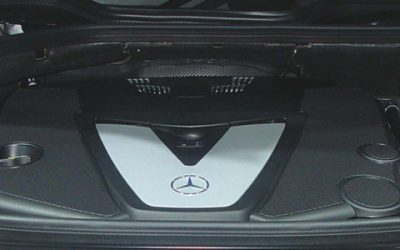Mercedes-Benz has always been an innovator in the automotive industry, and its powertrain technology shows this clearly. But besides the great leaps in engines that have produced the wonderful performance and efficiency of today, has anybody ever given any thought to how those engines are mounted in the chassis? Yes, indeed, and to a larger extent than you probably suspect.
Why You Should Use Only Genuine Mercedes-Benz Parts
There’s a lot more substance to this topic than you might think — it’s not just marketing hype. The rigorous “Genuine Parts” testing program is especially interesting and relevant to the price/value relationship.
Mercedes-Benz Certified Collision Centers: The Future Is Here
New structural and safety features of Mercedes-Benz vehicles require significant changes to collision repair facilities, equipment, and technician skills.
Why You Should Use Only Genuine Mercedes-Benz Brake Parts
Great stopping power, pleasant pedal feel, no noise or pulsation, and long life are all good reasons to buy friction components and everything that goes with them from your local M-B dealer’s parts department.
Variable Valve Timing: The Best of Both Worlds
We are a demanding people. We want to buy high-performance cars, but we don’t want to deal with the hard-starting and “lumpy” idle that come with high-profile, long-duration camshafts. How can engineers make more power and yet still give us a smooth idle?
Connections Come First
With the advent of the computer, electronics have exploded in every aspect of our lives, and the automobile is no different. Regardless of how sophisticated and productive, all M-B electronics still rely on basic wiring connections. It’s our job to keep all those connections clean, tight, and moisture-free to make everything in the electronics chain work the way it should.
FWD and MacPherson Struts Change the Collision Repair Game
Many advanced steering, stability control, and propulsion technologies in the front-drive CLA depend upon precise suspension geometry for proper vehicle operation. Here are some front wheel drive suspension basics for collision repairers who will be working on this history-making model.
Meet the CLA, Model Series 117
Big news from Mercedes-Benz! Not only front wheel drive and MacPherson struts, but also a host of other departures that prove the superiority of the company’s forward-thinking engineering.
Mercedes-Benz CDI Diesels: No More Knocking, Smoking, or Stinking
Unstable fossil-fuel markets, customer environmental awareness, and government regulations have all contributed to automobile manufacturers searching for the silver bullet for mpg. Mercedes-Benz has looked to its long diesel engine history, and added a huge dose of new technology.
Narrowing the Range of Temperatures with the E-Thermostat
In order to maintain emissions compliance, Mercedes-Benz engineers have to control the temperature range the engine will operate in and develop engine management parameters within this range. This may sound simple enough, but how do you accomplish this when the car might sit for an hour of traffic on a hot summer day, or cruise at highway speeds in the dead of winter?











